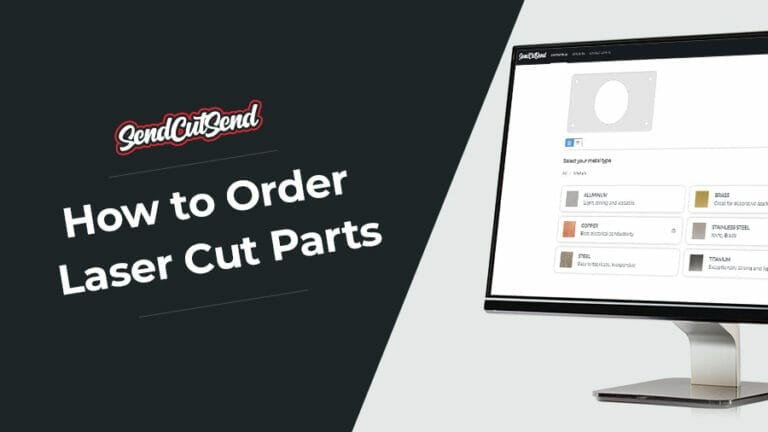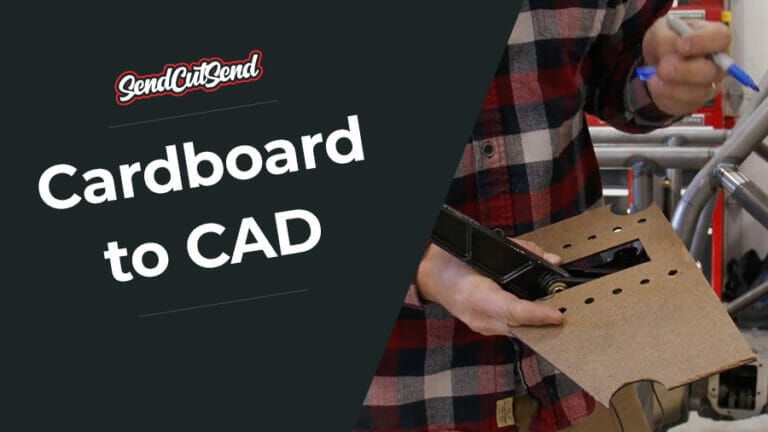Did you know you can weld fasteners together without any welding equipment? Unfortunately, this phenomenon is almost always done by accident, and is referred to as fastener galling, and is the result of a process called cold welding. This most often occurs with stainless steel fasteners, and can cause a sudden failure in the bolt. Usually the only remedy is to cut the nut off the damaged bolt, which poses problems for any design with internal threads or installed hardware.
In this article we’ll outline: what galling is, what increases the risk of galling, and a few good ways to avoid this day-ruining phenomenon.
What is Fastener Galling?
Galling is when fastener threads stick to each other, fusing together resulting in damage to one or both sets of threads. This usually occurs in metals that create a natural oxide layer, such as aluminum, titanium, and most often: stainless steel. When this fusion occurs, the locally welded segments of the threads will break free as the fastener is tightened, but the damage left behind then generates more friction, welding together a larger segment of the threads allowing the damage to make itself progressively worse.
Often this welding will grow until the torque required to break the locally fused material is greater than the shear capacity of the bolt, and the bolt head will break off. This fastener breakage often leads to questions over fastener integrity entirely missing the actual problem.
What Increases the Risk of Fastener Galling
Anything that increases the friction in a threaded joint will increase the locally generated heat, and thus increase the risk of fastener galling. Additionally some material types are inherently more prone to galling than others. Below several potential sources of galling risks will be outlined.
How Material Selection Impacts the Likelihood of Galling
Stainless steel fasteners are the most common culprit in causing fastener galling. While stainless steel fasteners are tempting to many designers as the best option, they bring with them the risk of galling and galvanic corrosion. Materials that generate a natural protective oxide layer are the most common culprits of galling. Aluminum, titanium, and stainless steel all three have this naturally occurring protective oxide layer. This increased risk is due to the fact that these fasteners generate their own protective layers, and usually are uncoated since the oxide layer prevents corrosion naturally. Once the oxide layer is removed during the fastener tightening process, the bare pure metal is exposed putting very easily welded materials into direct contact. The high heat of friction induced by fastener threads rubbing together under a high axial load then can cause the two threaded parts to weld together without an external heat source.
Soft Connection Elements & Galling
Elements that compress while being tightened down will increase the total amount of heat generated in the fasteners. Examples of this would be lock washers, belleville washers, gaskets, etc. As the fastener is compressing the material, the added axial load increases the friction, and thus the heat in the threads.
Nylon Locking Nuts (Nyloc or similar) Increase Galling Chances
Nylon locking nuts like Nyloc or similar will have a similar impact as the soft connections described above, only worse. The nylon nut will add friction and axial load to the fastener for the entire duration of the threads tightening due to the nylon engaging the threads. The soft connection elements only add load to the fastener once the elements start being compressed. These locking nuts are very useful to ensure low maintenance connections or in vibration intensive designs, however they should be used with care.
Excessive Thread Length
Excessive thread length is usually only a major concern when used in conjunction with a nylon locking nut since the increased time to tighten the fastener increases the total heat generated as more total turns are required to tighten the fastener sufficiently.
Damaged Threads
Damaged threads create fastener galling problems in two ways. The first is that the interference caused will generate more friction, and thus more heat. The second way is that the damage is more likely to remove the protective oxide layer from the fasteners, exposing the base metal that is very easily welded (see section on material selection).
How Thread Type Impacts Galling Likelihood
There are three main considerations in thread type when it comes to galling risk: rolled vs cut threads, thread class, and coarse vs fine threads.
Most bolts are manufactured via thread rolling, where a rod has the threads formed into it via compression as it is rolled between a pair of forms. Thread cutting is where material is cut away with a tool or tap, and it is how internal threads are manufactured. Thread rolling generates a smoother threaded surface compared to thread cutting. The small defects in thread cutting will generate friction as they smooth out. If a design uses external threads cut on a lathe or via a die, then the chance of galling will increase.
Thread class refers to the tolerances held when cutting the threads, and how tight or loosely the threads fit together. In general, most fasteners off the shelf will be 2A-2B by default, where A refers to external threads and B refers to internal threads. The number refers to the fit classes of 1,2,3 with class 3 being the tightest fit. The higher the class, the tighter the fit, and the more friction that will occur in the joint, creating a higher potential for fastener galling.
The last thread type to consider is coarse vs fine threads. Fine threads require more turns of the fastener to fully tighten the joint, increasing the total heat generated. Additionally, fine threads are more likely to be damaged and cause all the problems associated with damaged threads discussed above.
Above are two tools for cutting threads: left is a die, used to cut external threads like on a bolt, right is a tap, used to cut internal threads like on a nut.
Excessive Tightening Torque
Overtightening a joint is a common way to induce galling. As the axial load increases in the threads, the friction increases, further raising the temperature in the threads and the chance they will cold weld together. By using the proper torque, the threads are less likely to yield, which will not only weaken the joint, but will increase friction in the threads as they conform to each other.
High Speed Tightening
Since the galling process is initiated by generating excessive heat in a localized area, tightening the fastener quickly will increase the chance of fastener galling. This increased risk is because the heat does not have a chance to dissipate away from the threads when the fasteners are tightened quickly, increasing the local temperature in the threads.
Impact drivers are very useful tools, but if galling is a risk, consider dialing the speed back and/or finish tightening the bolt with a hand tool.
How to Prevent Fastener Galling
The easiest way to avoid fastener galling is to avoid using specialty fasteners made of stainless steel, aluminum, or titanium unless absolutely necessary. If this is unavoidable, consider mixing alloys of these metals.
Avoid specialty fasteners: Use fasteners made of stainless steel, aluminum, or titanium only if absolutely necessary.
Mix alloys when possible: Combine different alloys, like a stainless steel 316 bolt with a stainless steel 304 nut, to reduce the risk of cold welding.
Add lubricant: Apply lubricant to fasteners to lower friction and keep threads cooler, but use caution if the application is preload sensitive as it reduces required torque for preload.
Reduce installation speed: Slow down installation to allow heat dissipation and prevent excessive thread heating.
Avoid nylon nuts: Use nylon nuts only if necessary for vibration resistance or maintenance, as they increase axial load and friction, generating more heat.
Apply proper torque: Use correct torque to prevent excessive axial load, thread yielding, and added friction in the threads.
Use coarse threads (2A-2B thread class): This common thread class minimizes friction and reduces the risk of galling in joints.
Final Tips on Galling Prevention
While cold welding is a fascinating and sometimes useful process, galling can cause a lot of damage, scrapped work pieces, and headaches in any assembly. Generally it is best avoided by using the correct fasteners, slowing down installation speed, and applying the proper torque to the fasteners. Stainless fasteners and nylon nuts (aka nyloc nuts) are the most common culprits when it comes to fastener galling. Typically it is best to avoid using stainless hardware unless it is required. However steps can still be taken to allow the use of both nylon nuts and stainless fasteners if it is called for. If you have any questions, feel free to reach out to us at support@sendcutsend.com. If you’re curious how else we can help, check out this brief article: What SCS can do for you. When you’re ready, upload your design and get an instant quote today!
If you are new to SendCutSend, here’s a handy step-by-step guide on how to order parts from us: How to Order Parts from SendCutSend (spoiler alert: it’s super simple and intuitive to order from us)
FAQs
- What is galling?
- When two parts fuse together via cold welding causing damage to one or both parts.
- Are cold welding and galling the same thing?
- Technically they are different processes; galling is the result of cold welding. Galling is damage to surfaces when they have cold welded together.
- What fasteners are prone to galling?
- Fasteners that are made of stainless steel, fine threaded, or have damaged threads are the most susceptible to galling.
- Do nylon nuts cause galling?
- Nylon nuts (aka nylocs) by themselves do not cause galling, however they can increase the risk of galling, especially if combined with other factors discussed above.




